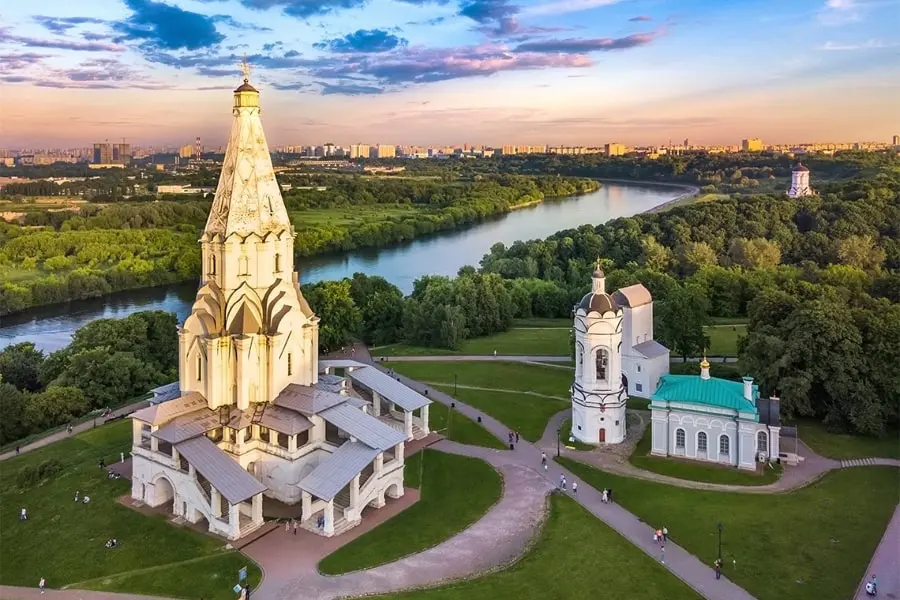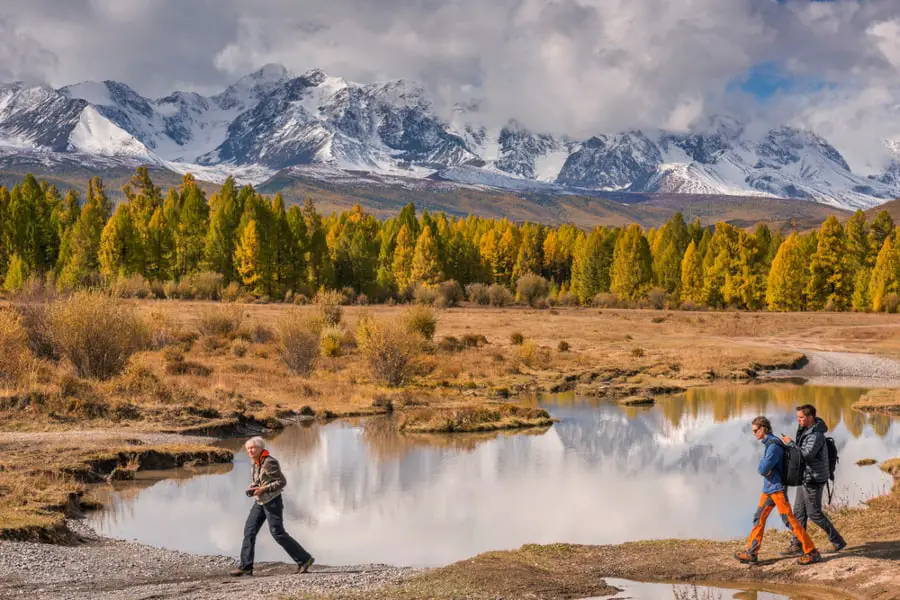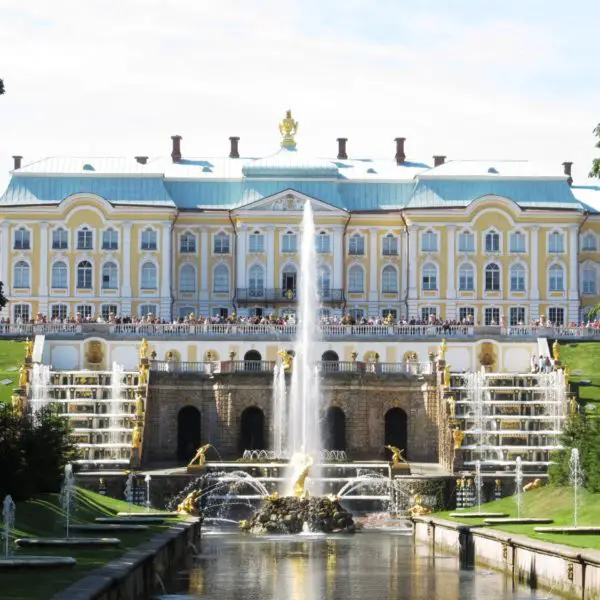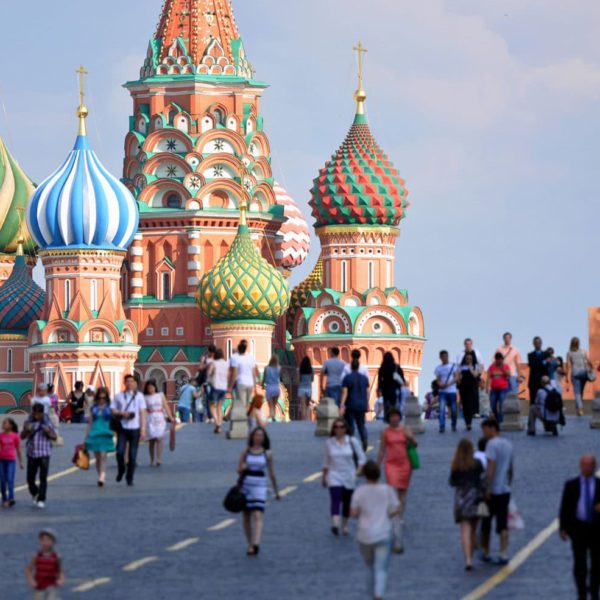16 UNESCO World Heritage Sites in Russia You Must Visit
Did you know that there are currently 26 UNESCO world heritage sites in Russia? That makes Russia 9th in the world for its total number of World Heritage Sites – 16 of which are cultural and 10 of which are natural.
With its long history, sheer size and varied terrain, Russia’s World Heritage richness should come as little surprise. Yet many tourists aren’t familiar with them and don’t know how to see them during a vacation in Russia. We’ve decided to compile a list of the top UNESCO World Heritage Sites in Russia that may be of interest to travellers. All these sites are accessible via at least one of our scheduled or private tours. You could even put together your own bucket list style Russian World Heritage custom-made tour.
Let’s kick off our list of Russia’s Top 15 UNESCO World Heritage Sites in Russia with few of its man-made wonders. Let’s start with the cultural ones:
Table of Contents
Moscow UNESCO Sites
1. Kremlin and Red Square

Moscow’s Red Square and towering Kremlin aren’t just visually jaw-dropping, they’re also inextricably linked to all the most important historical events in Russia since the 13th Century. The Kremlin represents the meteoric rise and downfall of the Tsars, the heartland of the Soviets and the political pre-eminence of modern-day Russia. The Red Square also houses St Basil’s Basilica, one of the world’s most recognisable and dazzling religious monuments.
2. Novodevichy Convent

Built in the 16th and 17th centuries in the so-called Moscow Baroque style, Novodevichy is part of a chain of monastic ensembles that were cleverly integrated into the defence system of the city. The convent was used by the women of the Tsar’s family and many of the best-known aristocrats are buried in its cemetery. According to UNESCO, the convent is an example of the highest accomplishments of Russian architecture, with lavishly decorated interiors and an important collection of art and artefacts.
3. Church of the Ascension in Kolomenskoye

Built-in 1,529 it became one of the first churches in Moscow to break from the Byzantine Tradition, with its dazzling white tent-like column. Built to celebrate the birth of Tsar Ivan IV (later, ‘Ivan the Terrible’), it was a huge influence on later Russian architecture. The church is set on a stunningly scenic 390-hectare of the Kolomenskoye estate overlooking the banks of the Moskva River, about 12km from Moscow’s centre.
All three of Moscow’s UNESCO World Heritage sites can be visited in one day. Our Moscow tours spread the sites over several days to give you enough time to appreciate all three of these man-made wonders in their unrivalled splendour with no lines and with the pre-paid tickets, which allows you truly enjoy these marvellous architectural masterpieces, hustle-free. If you travelling on your own, plan a full day in order to see these three attractions, and one more day to fully enjoy the museums and churches, located on the Kremlin and Red Square’s territory, such as Armory Chamber, St Basil Cathedral and many others.
Golden Ring UNESCO Sites
4. The historic centre of Yaroslavl

One of the most popular tourist routes out of Moscow is the Golden Ring, a string of beautifully preserved medieval settlements whose towns have been declared open-air museums. Considered the oldest existing settlement on the Volga River, Yaroslavl dates back to the 11th century, when it began to attract many of Russia’s greatest artists and architects. In the 17th century, Catherine the Great displayed her genius for urban planning, with an ahead-of-its-time radial plan which saw the city renovated with pleasant squares, urban parkland and onion-domed churches.
5. Trinity Sergius Lavra

A fantasy city made real, with the blue and gold domes of its churches dominating the skyline of this delightfully miniature 15th-century town Sergiyev Posad is home to another World Heritage site commonly visited on the Golden Ring circuit, the Trinity Lavra of St Sergius. This working monastery is one of Russia’s most important spiritual centres, and currently houses about 300 monks in a complex of beautiful Baroque style buildings.
6. White Monuments of Vladimir and Suzdal

The complex of eight architectural and historical monuments of the two most ancient cities of Russia, Vladimir and Suzdal, was united for the sole reason – all of its architectural sites are monuments of white stone architecture. The complex of monuments includes the church of Boris and Gleb, the Assumption Cathedral and the Golden Gates in Vladimir, The Saviour Monastery of Saint Euthymius and the Kremlin is Suzdal, as well as other sites n nearby villages of Bogolyubovo and Kideksha.
Join a 2-day tour, in order to see these beautiful UNESCO sites, or plan a longer vacation to see the Classic Golden Ring, which includes more than 8 cities: Yaroslvl, Kostroma, Sergiev Posad and others.
St Petersburg UNESCO Sites
7. The historic centre of St Petersburg

The Historic Centre of St Petersburg, as well as the buildings and ensembles located in the immediate vicinity, were designated as a World Heritage site in 1991. Begun as a vast urban project under Peter the Great in 1703, later, the city known as Leningrad in the former USSR became closely associated with the October Revolution. The city centre is unique for its mix of extremely varied baroque and pure neoclassical styles, the most famous being the Admiralty, the Winter Palace, the Marble Palace and the Hermitage.
The best way to get to St Petersburg is via fast 4-hour train or an overnight train from Moscow. Check our St Petersburg tours and its combination with Moscow and other regions of Russia.
Karelia UNESCO Sites
8. Kizhi Pogost

Not as well-known as its big-city counterparts, Kizhi Pogost is a 17th-century site located on Kizhi Island in the Republic of Karelia. The ‘pogost’ is an area including two wooden churches, the 22-dome Transfiguration Church and the 9-dome Intercession Church, along with an octagonal bell tower. Despite being built exclusively out of wood, the churches are still standing after 150 years. The site’s natural setting on Lake Onega is also astoundingly beautiful.
One of the best ways to visit Kizhi is via a Volga River cruise from Moscow to St Petersburg or vice-versa or take an overnight train from St Petersburg to Petrozavodsk for a tour around the area. Check the Karelia and Kizhi island 3-day tour to explore Karelia ta a glance.
9. Solovetsky Islands

The Solovetsky Islands (often referred to as Solovki) are six islands located in the waters of the White Sea in northern Russia. It is located just 165km from the Arctic Circle. Founded in the 15th century, Solovetsky Monastery was one of Russia’s most famous and holy monasteries and became a major pilgrimage destination. Chosen for being an outstanding example of a northern European monastic settlement, it is also noted for its well-preserved stone labyrinths. The terrain is hilly with the highest point reaching 107 meters and the land is covered with spruce and pine forests. Many of the stone structures were built during Ivan the Terrible’s reign and the islands were the sites of an eight-year siege after monks expelled Tsarist officials following the 1653 church reforms led to a schism.
The best way to explore Karelia’s sites is to combine it with your vacation in St Petersburg, from where you just take an overnight train (to Petrozavodsk). Check our Karelia tours and discover this majestic Nordic region of Russia.
Kazan, Tatarstan Republic UNESCO Sites
10. Kazan Kremlin

The Kazan Kremlin is a collection of buildings from the 10th to the 16th centuries that make up the chief citadel of Tatarstan Republic. The Tatars are a Muslim Turkic people and one of the largest ethnic groups in Russia. Kazan was conquered in the name of Christianity by Ivan the Terrible in 1552. Although it bears little resemblance to the original citadel, The Tatar fortress is still a place of pilgrimage and the world’s only centre of Tatar National Culture.
The site contains a number of elaborate buildings including the iconic leaning Söyembikä Tower (of somewhat mysterious origins). You’ll also be able to explore the beautiful Qol-Şärif (Kul-Sarif) Mosque and Museum of Islamic Culture, the Assumption Church, and a large museum complex which covers Natural History, the Great-Patriotic Memorial War Museum, the National Art Gallery of Tatarstan and the Kazan Hermitage (a cute mini Hermitage displaying items on loan from its much larger cousin in St Petersburg).
11. Bolgar

The Bolgar Architectural and Archaeological Complex is considered of great historical importance as the site of the medieval city of Bolgar from the 7th and 15th centuries AD. Some structures remain, including a moat, wall and several religious and civil structures. It’s believed Bolgar played a pivotal role in the formation of civilizations and cultures, set at the crossroads of trade, economic, cultural and political exchange between Europe, Asia and the Middle East.
12. Sviyazhsk

The Assumption Cathedral and Monastery of Sviyazhsk is located on an island town in the at the confluence of the Volga and Schucka Rivers. Founded by the ever-hard working Ivan the Terrible in 1551, it formed the crossroads of the Silk and Volga routes, bring power, trade and influence to Russia from the East. It houses some of rarest examples of Eastern Orthodox mural paintings, including the world’s only fresco of St Christopher bearing the head of a horse.
***
Now let’s move on to 5 of Russia’s most spectacular natural World Heritage sites (our apologies to the remaining five, which are equally as magnificent, but not so easy to get to without a whole lot of planning and preparation).
UNESCO world heritage sites in Russia, that are in Siberia
13. Lake Baikal (Eastern Siberia)
Impossible to write about UNESCO world heritage sites in Russia without mentioning Lake Baikal, rightfully upheld as Siberia’s most famous attraction – with a maximum depth of 1,642m, it’s the deepest lake in the world, and at 25 million years old, also the most ancient. It contains 20% of the world’s unfrozen freshwater reserves and some of the world’s clearest waters, appearing like a vast inland sea in summer and an endless, solid plain in winter, as ice over a metre thick freezes over the inky depths of the lake and turns it into a playground for winter sports.
You can get to Lake Baikal by direct flights to Irkutsk from Moscow, St Petersburg, Vladivostok and other cities of Russia, as well as from Beijing and Seoul. Irkutsk is a famous stop on the iconic Tran-Siberian, so if you planning to travel by train, definitely leave 4-5 days to explore the region.
Tours of the Baikal region reveal astonishing natural sights and unique indigenous culture year-round. Check the Legend of Lake Baikal tour for exploring this site in Summer, or the Lake Baikal Ice adventure for an unforgettable winter experience.
14. Volcanoes of Kamchatka (Russian Far East)

The ancient volcanic and glacial activity has carved Kamchatka into a bizarrely beautiful landscape of fire and ice. Six of Kamchatka’s volcanic sites (out of some 300) have been designated World Heritage areas as they highlight the majority of the peninsula’s volcanic features. Kamchatka is considered a world-class region for species diversity, home to highest concentrations of brown bears, sea otters and Steller’s sea eagles.
You can get to Kamchatka either via a direct flight to Petropavlovsk-Kamchatsky from Moscow, Vladivostok or Khabarovsk. In Summer months there are occasional direct flights operate from Tokyo and Anchorage (Alaska).
Kamchatka’s critters and craters are best viewed together during the summer tour of the peninsula, while extreme sports enthusiasts can heli-ski down its volcanic slopes in the winter months.
15. Golden Mountains of Altai (Western Siberia)

According to UNESCO, the Altai region represents the most complete sequence of altitudinal vegetation zones in central Siberia, from steppe and mixed-forest to alpine. UNESCO cited the Russian Altai importance for preserving globally endangered mammals including the Altai argali and snow leopard. Some of the world’s most beautiful mountain hikes cross through the varied landscapes of the Russian Altai. In late spring after the snowmelt, the ridges of the mountains take on a golden hue from a distance, and up-close are seen to be blanketed with stunning wildflowers.
16. Wrangel Island, Arctic Russia

This site, located well above the Arctic Circle, includes the mountainous Wrangel Island and its much-smaller neighbour, Herald Island. Because the Wrangel region didn’t glaciate during the last ice age, it supports unusually dense biodiversity for the Arctic Region, including the world’s largest population of polar bears, and the highest concentration of walruses on earth. The waters are important feeding grounds for grey whales, and the islands are the northernmost nesting grounds for over 100 migratory bird species. Virtually undisturbed by human interference, the wildlife of Wrangel can only be visited during the brief summer months aboard an ice-strengthened expedition vessel.
Check the Wrangel Island Arctic Expedition Cruise itinerary and embark on this once-of a life adventure.
Related posts
Related Tours
If you have any urgent questions or enquiries, please give us a call +61 412 587 785




